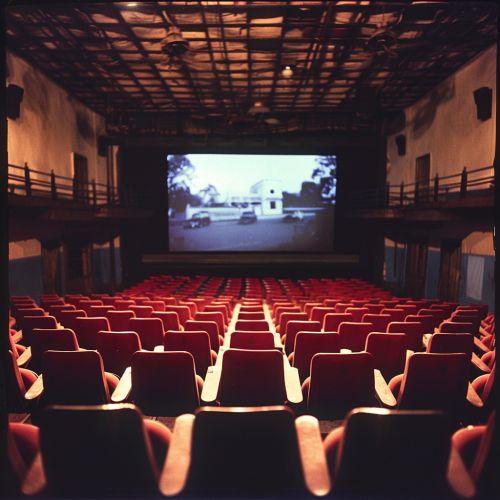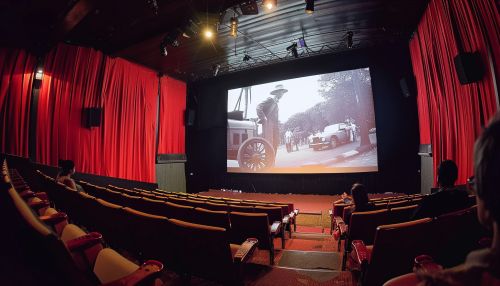Cinema of Latin America
Cinema of Latin America
The cinema of Latin America encompasses the film industries and cinematic traditions of the countries in Central America, South America, and the Caribbean. This diverse and dynamic region has produced a rich tapestry of films that reflect its complex social, political, and cultural landscapes.
Historical Overview
Early Beginnings
The origins of Latin American cinema can be traced back to the late 19th and early 20th centuries, coinciding with the advent of film technology. The first films were often short documentaries or newsreels, capturing everyday life and significant events. Countries like Mexico, Brazil, and Argentina were among the pioneers in this early period.
In the 1910s and 1920s, the silent film era saw the emergence of notable filmmakers and the establishment of the first film studios. For instance, Mexico's Salvador Toscano Barragán is often credited with creating the country's first narrative film, "Don Juan Tenorio" (1898).
The Golden Age
The 1930s to the 1950s are often referred to as the Golden Age of Latin American cinema, particularly in Mexico and Argentina. This era was marked by the production of high-quality films that gained international acclaim.
In Mexico, the Golden Age was characterized by the rise of iconic actors such as María Félix, Pedro Infante, and Dolores del Río. Films like "María Candelaria" (1943) by Emilio Fernández and "Los Olvidados" (1950) by Luis Buñuel became classics.
Argentina also experienced a cinematic boom during this period, with directors like Leopoldo Torre Nilsson and actors such as Libertad Lamarque gaining prominence. The film "La Guerra Gaucha" (1942) is a notable example of this era's output.


Decline and Resurgence
The 1960s and 1970s saw a decline in the film industries of many Latin American countries due to political instability, economic challenges, and competition from Hollywood. However, this period also gave rise to the Cinema Novo movement in Brazil, which sought to address social issues and break away from traditional cinematic conventions.
Directors like Glauber Rocha became key figures in this movement, with films such as "Black God, White Devil" (1964) and "Entranced Earth" (1967) gaining critical acclaim.
In the 1980s and 1990s, there was a resurgence of Latin American cinema, driven by the emergence of new talents and the support of international film festivals. Countries like Cuba, Chile, and Colombia began to produce films that garnered global attention.
Contemporary Cinema
Notable Directors and Films
The 21st century has seen the rise of several Latin American directors who have achieved international recognition. Alejandro González Iñárritu, Alfonso Cuarón, and Guillermo del Toro from Mexico, often referred to as "The Three Amigos," have won numerous awards, including Academy Awards.
Iñárritu's "Amores Perros" (2000) and "Birdman" (2014), Cuarón's "Y Tu Mamá También" (2001) and "Roma" (2018), and del Toro's "Pan's Labyrinth" (2006) and "The Shape of Water" (2017) are exemplary works that have left a significant impact on global cinema.
Regional Variations
Latin American cinema is not monolithic; it varies significantly from country to country, reflecting local cultures, histories, and social issues.
- **Mexican Cinema**: Known for its vibrant storytelling and strong performances, Mexican cinema continues to thrive with films like "Roma" and "The Shape of Water."
- **Brazilian Cinema**: Brazil's film industry has produced critically acclaimed works such as "City of God" (2002) and "Central Station" (1998).
- **Argentinian Cinema**: Argentina has a rich cinematic tradition, with films like "The Secret in Their Eyes" (2009) winning international accolades.
- **Cuban Cinema**: Cuban films often explore themes of revolution and social change, with "Strawberry and Chocolate" (1993) being a notable example.
- **Chilean Cinema**: Chilean filmmakers have gained recognition for their poignant storytelling, as seen in "A Fantastic Woman" (2017).
Themes and Styles
Latin American cinema is known for its diverse themes and styles, often reflecting the socio-political realities of the region.
Social and Political Commentary
Many Latin American films address social and political issues, such as poverty, inequality, and human rights. This tradition can be traced back to the Cinema Novo movement and continues in contemporary works.
Films like "City of God" and "The Motorcycle Diaries" (2004) offer critical insights into the lives of marginalized communities and historical figures.
Magical Realism
Magical realism, a literary style that blends the magical with the mundane, has also influenced Latin American cinema. This can be seen in films like "Like Water for Chocolate" (1992) and "Pan's Labyrinth."
Realism and Neo-Realism
Realism and neo-realism are prevalent styles in Latin American cinema, focusing on authentic portrayals of everyday life. Films like "Roma" and "Central Station" exemplify this approach.
Film Festivals and Awards
Latin American films have gained recognition at major international film festivals, such as the Cannes Film Festival, the Berlin International Film Festival, and the Venice Film Festival. These platforms have helped bring Latin American cinema to a global audience.
The Ariel Awards in Mexico, the Grande Prêmio do Cinema Brasileiro in Brazil, and the Premios Sur in Argentina are some of the prestigious awards that honor excellence in Latin American cinema.
Challenges and Opportunities
Despite its achievements, Latin American cinema faces several challenges, including limited funding, censorship, and competition from Hollywood. However, the rise of digital technology and streaming platforms has created new opportunities for filmmakers to reach wider audiences.
Conclusion
The cinema of Latin America is a vibrant and dynamic field that continues to evolve. With its rich history, diverse themes, and innovative storytelling, Latin American cinema offers a unique perspective on the human experience.
